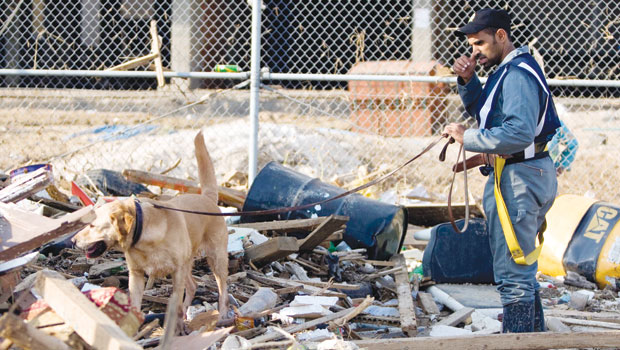People were shocked with the damage left by Jeddah floods. The catastrophe encouraged many government institutions to start gathering money and offering help for homeless families. Young Saudi men and women volunteered as nurses and cooks. Some families opened their homes to receive homeless families.
Despite the great effort presented by the Saudi people, Saudi artists were unable to perform their roles in complete freedom, according to Fatima Baazeem, a Saudi artist who visited the flood areas. She said she was disappointed that a big art expo to support the flood victims was stopped.
A large number of Saudi artists and photographers went to the flooded area immediately to help and assist in the rescue operations. The event was an opportunity to document the disaster in order to portray these photos at their exhibitions.
“Since the very beginning of the catastrophe I went with a large number of Saudi artists to the flood area. My plan was to help them. I took my camera to take photos of the damage, but I was afraid of the people’s reactions to my camera,” said Baazeem. “I took those photos of every single detail in the flooded areas and I participated in an art expo held by Civil Defense under the title ‘Catastrophes.’ This expo was the only expo that was held by a governmental institution and it was talking generally about catastrophes.”
According to Baazeem, the Jeddah Chamber of Commerce and Industry was planning to hold a huge art expo for all Saudi artists.
“All Saudi artists were ready to participate, but suddenly we heard that the art exhibition had been canceled and that we would not be allowed to hold any other exhibition on the flood theme.”
Baazeem decried the absence of a governmental event to patronize the artists’ effort during the floods.
“All the exhibitions that occurred were the result of personal effort. Now we are not allowed to hold exhibitions on the flood theme,” said Baazeem.
Tahani Al-Braiki, a young Saudi artist who contributed her artwork to express her sadness over the disaster in her personal exhibition, said: “I produced several artworks on the Jeddah flood because the flood area is only ten minutes from my home. I presented several pictures carrying different names, such as ‘Grave,’ ‘Spring,’ ‘Devil,’ ‘Crowd,’ ‘Dead People Steps,’ ‘The End of the World 2012’ and ‘Stop.’ When I drew the artwork I felt myself forced to face the floods and fight them with my paintings.”
According to Al-Braiki, the Saudi artists contributed positively by holding several expos and competitions under the title “Jeddah Flood and Black Wednesday.”
Ahmad Hussein was another Saudi artist who believed that drawing the disaster and people suffering was his duty.
“Artists are always influenced with conditions and weather. These conditions are positive or negative. Most Saudi artists were influenced by ‘Black Wednesday.’ They want to express their emotions through their artwork,” said Hussein. “It was a necessity to draw the disaster from the artist’s point of view. I drew a picture called ‘An Error Occurred After the Rain.’ In this picture I tried to draw Jeddah’s sadness by drawing the damage that appeared after the flood. I also blamed those who caused the disaster in one of my pictures. All these efforts appeared through personal effort from the Saudi artists.”
Hussein and number of Saudi artists held an art expo under the title “Black Wednesday.”
One-hundred and thirty Saudi men and women participated in an art expo called “A Picture at Each Home” to display artwork inspired by the Jeddah floods.
“The expo discussed the role of art in underscoring the negative issues, spotlighting important issues and warning the people against certain problems that may occur in the future,” said Hussein.
Hussein said that Saudi artists participated positively to express Jeddah’s sadness.
Suzan Ba-Aqeel, a Saudi photographer who has participated in several international exhibitions, said she preferred to post her photos in the media rather than holding exhibitions.
“The best way to show the disaster and express our sadness is to portray the tragedy in order to depict the destruction and gray water and take pictures of the victims and their families,” said Ba-Aqeel. “I had already taken photos of the flooded areas a few hours after the disaster. I didn’t hold an expo to display the pictures, but I sent them to famous agencies to show them the reality. I received mail and calls from everywhere. All the people sympathized with our tragedy. Most foreign people were ready to offer help and donations for the victims. I wish we would continue in depicting pictures about the catastrophe. We should not stop holding expos and competitions on this theme. I portrayed the Jeddah floods because I believe that the photo are always stronger than the word or the voice.”










